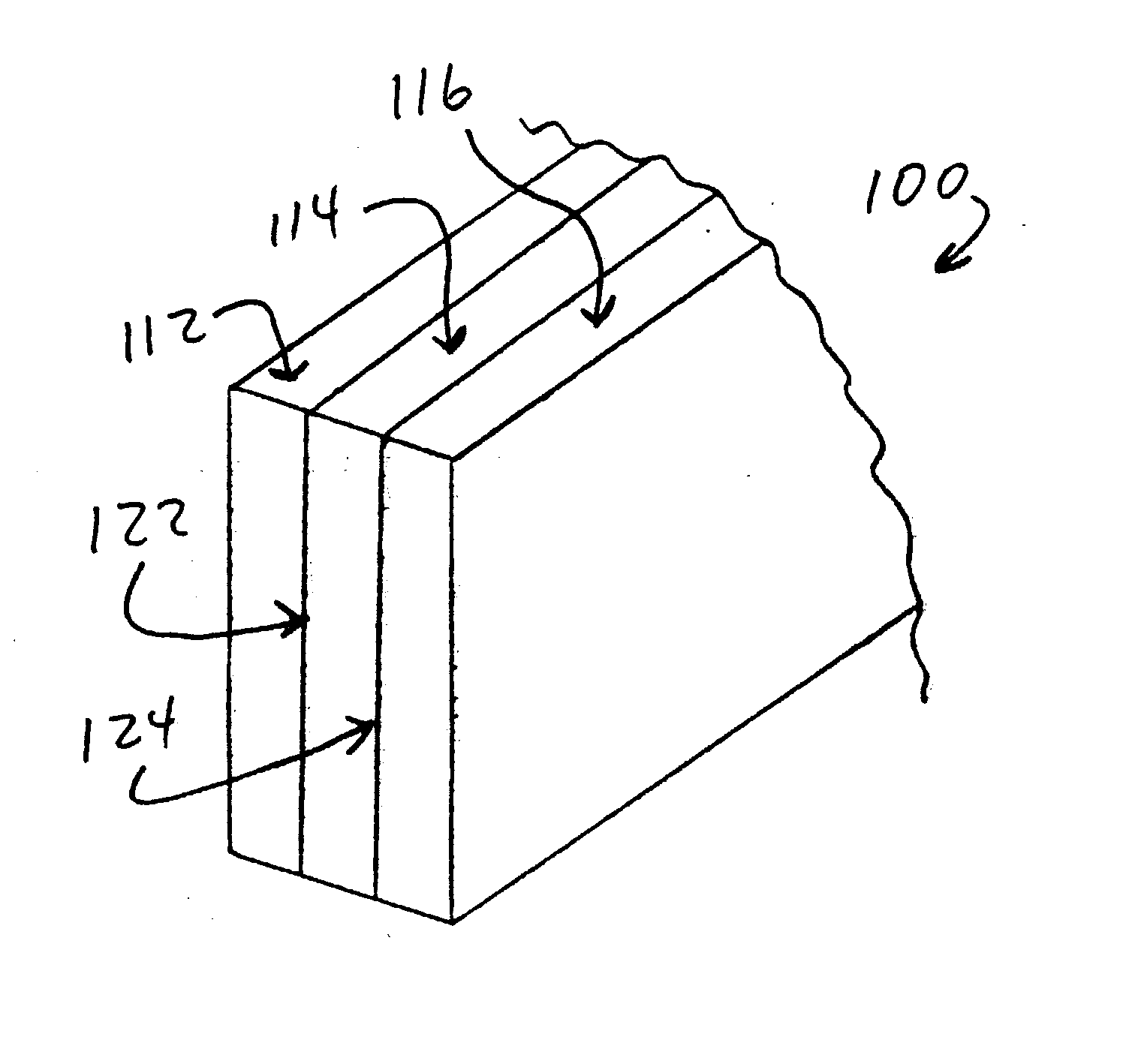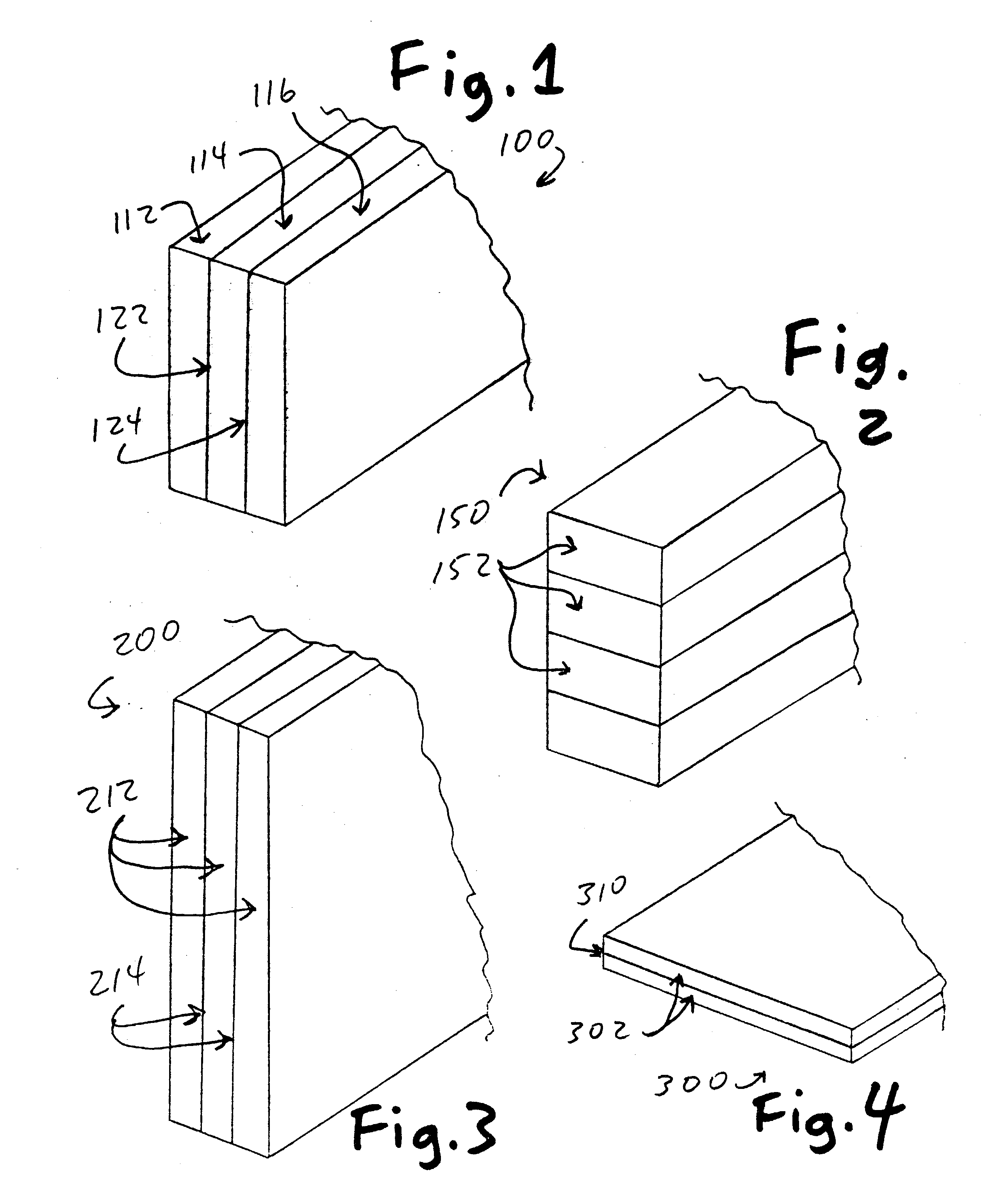Laminated beams, boards, planks, and rails with enhanced stiffness and strength, made from nylon fiber composites
a technology of nylon fibers and composites, applied in the field of building materials, can solve the problems of low strength of recycled plastic lumber, limited use of nylon fibers in the manufacture of recycled plastic planks, and inability to meet the needs of construction, and achieves the effects of reducing construction costs, improving building design and construction, and substantially increasing strength
- Summary
- Abstract
- Description
- Claims
- Application Information
AI Technical Summary
Benefits of technology
Problems solved by technology
Method used
Image
Examples
Embodiment Construction
[0074] As briefly summarized above, this invention relates to wood-like building materials, made of laminated layers of composites that contain synthetic fibers, such as nylon fibers. These building materials are manufactured with lengths, widths, and thicknesses that render them suitable for use as: [0075] 1. Beams, in construction of a conventional framed house. As used herein, the term “beam” includes studs, joists, rafters, posts, beams, and truss members, as those terms are used by carpenters and home-builders. [0076] 2. Rails, as that term is used in relation to decks, docks, fences, and other outdoor or marine structures. [0077] 3. Boards and / or planks. As used herein, these terms are interchangeable, and refer to pieces of wood or wood substitutes that do not have sufficient thickness to be safely and reliably used as load-bearing beams in a conventional framed house.
[0078] When referring to wood, an arbitrary dividing line between “beams” versus “boards” can be provided by...
PUM
| Property | Measurement | Unit |
|---|---|---|
| thick | aaaaa | aaaaa |
| thickness | aaaaa | aaaaa |
| thickness | aaaaa | aaaaa |
Abstract
Description
Claims
Application Information
 Login to View More
Login to View More - R&D
- Intellectual Property
- Life Sciences
- Materials
- Tech Scout
- Unparalleled Data Quality
- Higher Quality Content
- 60% Fewer Hallucinations
Browse by: Latest US Patents, China's latest patents, Technical Efficacy Thesaurus, Application Domain, Technology Topic, Popular Technical Reports.
© 2025 PatSnap. All rights reserved.Legal|Privacy policy|Modern Slavery Act Transparency Statement|Sitemap|About US| Contact US: help@patsnap.com


